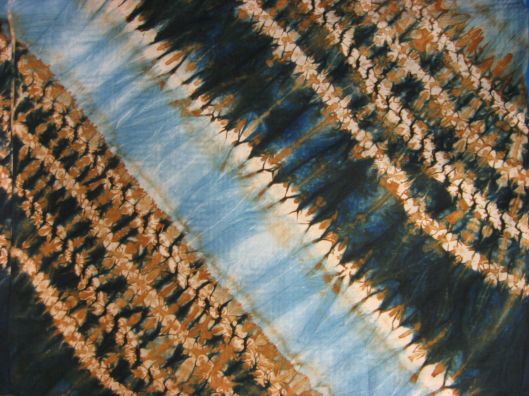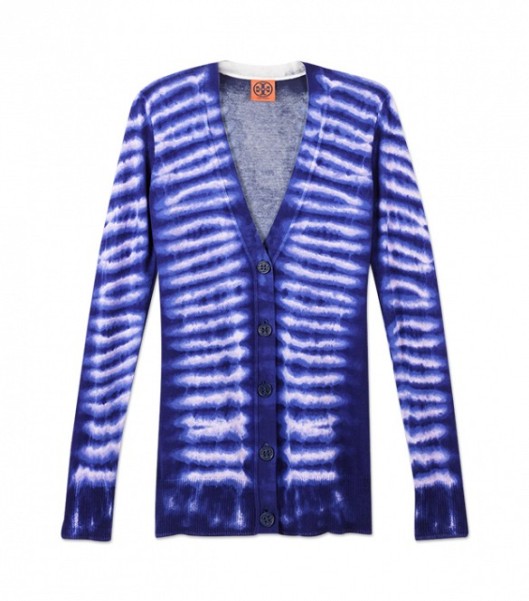Tags
apparels, fabric, fashion blog, fashion designers, fashion history, fashion illustrations, freelance fashion designer, garments, Indian fashion, Japanese Shibori, Thailand Mudmee, Tie dye
Tie-dye is a technique in which a garment is tied, folded or knotted in different ways and then dipped in organic or factory dyes to create patterns in the dyed fabric. While many associate the advent of tie-dye to the liberal culture of the hippies in the 60s, the process of tie-dye has been around for over a thousand years, with the first known instances of tie-dye garments dating to the 6th century in India, Japan and Africa.
 Indian Bandhini (Courtesy: Indiamart)
Indian Bandhini (Courtesy: Indiamart)
 Japanese Shibori (Courtesy: Akemi Nakano Kohn) designs
Japanese Shibori (Courtesy: Akemi Nakano Kohn) designs
Dyeing as a technique was known to prehistoric man, who used various plant extracts from leaves, bark, flowers, fruits and roots to colour garments. Folding, forming and knotting gave the dye a pattern based on the extent to which the dye penetrated. This created designs which were attractive. In India, one of the oldest form of tie-dye – known as Bandhini – is still found flourishing today. This involves tying the fabric with small knots to created dotted patterns on the cloth. Asian tie-dye techniques such as Shibori and Batik are also popular. The Chinese used tie-dye for garments from the 6th century, and called it “zha ran” or “jiao xie”. These were worn only by priests and nobility, signifying the value and importance given to this technique of garment production. The Japanese used tie dye as far back as 552 AD, and developed the Shibori style, in which certain areas were restricted from reaching the dye, through and intricate pattern of stitching, tying and folding using sticks, rocks, threads and rubber bands. They also used sumi dye to paint certain designs and patterns which became darker after dyeing as compared to the surrounding areas.
 Examples of African tie-dye (courtesy: Tictoc)
Examples of African tie-dye (courtesy: Tictoc)
 Mudmee (Courtesy: Mexicali Blues) designs
Mudmee (Courtesy: Mexicali Blues) designs
Africa and places like Peru have also shown historical traces of tie-dyed fabric. In Africa, the Yoruba women of West Nigeria use indigo (a natural plant extract) to dye cloth in various hues, creating patterns of blue shades on the cloth, due to stitching and folding techniques. Ikat, originating in Asia, involves tie-dyeing the yarn of the warp or weft before weaving. Another popular technique known as Mudmee originates from Thailand and the Indochina region, and involves a slightly different style with more subdued colours, generally on a black background as compared to white for most of the other types.
 Hippie tie-dye designs (Courtesy: Wheretoget.it)
Hippie tie-dye designs (Courtesy: Wheretoget.it)
 Hippie tie-dye designs (Courtesy: Wheretoget.it)
Hippie tie-dye designs (Courtesy: Wheretoget.it)
Tie-dye became popular in the modern era through the hippie movement of the 60s, which popularised the making of home-made designs and patterns using psychedelic colours. It became synonymous with the liberal culture and freedom of expression, with artist like Jimi Hendrix and Janis Joplin making it popular among the youth of that generation.
 Tie-dye designs from House of Holland (Courtesy: Whowhatwear.com)
Tie-dye designs from House of Holland (Courtesy: Whowhatwear.com)
 Tie-dye designs from Tory Burch (Courtesy: Whowhatwear.com)
Tie-dye designs from Tory Burch (Courtesy: Whowhatwear.com)
 Tie-dye designs from Miu Miu (Courtesy: Whowhatwear.com)
Tie-dye designs from Miu Miu (Courtesy: Whowhatwear.com)
Modern tie-dye is mass-produced and largely consists of tie-dye prints, since original tie-dye is difficult to consistently replicate. Designers such as Miu Miu, House of Holland and Tory Burch have made modern tie-dye designs popular among the premium set, reviving a style that has seen a drop in popularity over the last few decades. In spite of the acceptance of tie-dye even among premium fashion designers, it still remains the commoner’s ultimate expression of fashion freedom.
Supriya Ghurye is the founder and owner of Fuel4Fashion, the first virtual design studio that caters to new and upcoming fashion design labels with a diverse portfolio of design services. She is a member of the Cherie Blair Foundation’s Women Entrepreneurship Program and has over a decade of fashion industry experience with international labels and start-ups.
